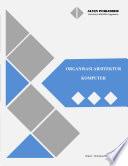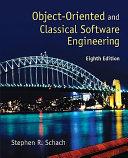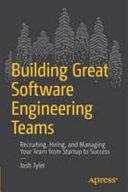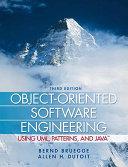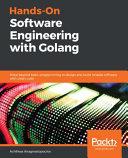
Hands-On Software Engineering with Golang
Move Beyond Basic Programming to Design and Build Reliable Software with Clean Code
Explore software engineering methodologies, techniques, and best practices in Go programming to build easy-to-maintain software that can effortlessly scale on demand Key Features Apply best practices to produce lean, testable, and maintainable Go code to avoid accumulating technical debt Explore Go's built-in support for concurrency and message passing to build high-performance applications Scale your Go programs across machines and manage their life cycle using Kubernetes Book Description Over the last few years, Go has become one of the favorite languages for building scalable and distributed systems. Its opinionated design and built-in concurrency features make it easy for engineers to author code that efficiently utilizes all available CPU cores. This Golang book distills industry best practices for writing lean Go code that is easy to test and maintain, and helps you to explore its practical implementation by creating a multi-tier application called Links 'R' Us from scratch. You'll be guided through all the steps involved in designing, implementing, testing, deploying, and scaling an application. Starting with a monolithic architecture, you'll iteratively transform the project into a service-oriented architecture (SOA) that supports the efficient out-of-core processing of large link graphs. You'll learn about various cutting-edge and advanced software engineering techniques such as building extensible data processing pipelines, designing APIs using gRPC, and running distributed graph processing algorithms at scale. Finally, you'll learn how to compile and package your Go services using Docker and automate their deployment to a Kubernetes cluster. By the end of this book, you'll know how to think like a professional software developer or engineer and write lean and efficient Go code. What you will learn Understand different stages of the software development life cycle and the role of a software engineer Create APIs using gRPC and leverage the middleware offered by the gRPC ecosystem Discover various approaches to managing package dependencies for your projects Build an end-to-end project from scratch and explore different strategies for scaling it Develop a graph processing system and extend it to run in a distributed manner Deploy Go services on Kubernetes and monitor their health using Prometheus Who this book is for This Golang programming book is for developers and software engineers looking to use Go to design and build scalable distributed systems effectively. Knowledge of Go programming and basic networking principles is required.
- ISBN 13 : 9781838554491
- ISBN 10 : 1838554491
- Judul : Hands-On Software Engineering with Golang
- Sub Judul : Move Beyond Basic Programming to Design and Build Reliable Software with Clean Code
- Pengarang : Achilleas Anagnostopoulos,
- Kategori : Computers
- Bahasa : en
- Tahun : 2020
- Halaman : 640
- Google Book : http://books.google.co.id/books?id=AIBLzQEACAAJ&dq=intitle:software+engineering&hl=&source=gbs_api
-
Ketersediaan :
By the end of this book, you'll know how to think like a professional software developer or engineer and write lean and efficient Go code.

